David Stairs
Among the upper castes individuals might change their religion, but lower down the scale a particular caste in a locality, or almost an entire village would be converted. Thus their group life as well as their functions continued as before with only minor variations as regards worship, etc. Because of this we find today particular occupations and crafts almpst entirely monopolized by Muslims. Thus the class of weavers is predominantly, and in large areas wholly Muslim. So also used to be shoe-merchants and butchers. Tailors are almost always Muslims. —Jawaharlal Nehru The Discovery of India
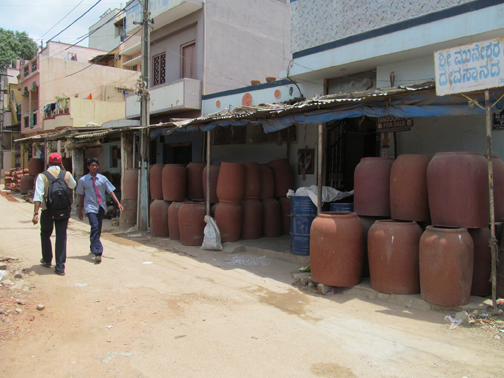
Terra cotta plays an important role in modern Indian society. In a way not seen in the West for over a century, clay serves important and economical utilitarian functions. At any market one can find objects in clay, from water-bearing lotas to lamps, from children’s banks to large earthen vats. These things can be found along the roadside in other societies too, say, in Africa. But their ubiquity in India led me to seek out their local source in Bangalore.
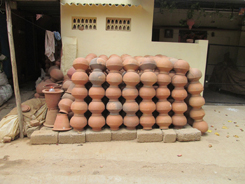
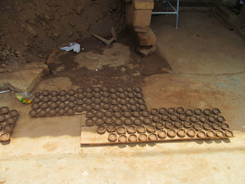
As Nehru suggests in the above quote, products and craft services in Indian cities are often neighborhood and caste related. Names like Marble Street or New Bamboo Bazaar Road are self explanatory, deriving from the time when villages were craft specific: here the blacksmiths, there the weavers, etc. As cities expanded they absorbed outlying areas which then became neighborhoods. Bangalore got its start as a military cantonment, but eventually out grew that role and now has exploded in both population and geographic size with the advent of the digital era.
In Bangalore, clay is king in Pottery Town. This rather small, two-block area is cluttered with the products of the potter’s wheel. Everywhere the ground is strewn with thousands of vessels, small and large, air and sun drying. Here is a pile of small lamps, there a stack of lotas, and again a cart of cups.
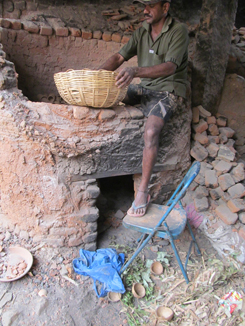
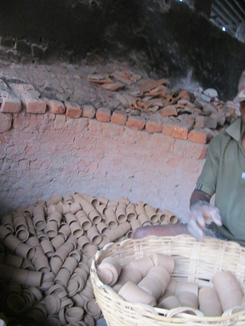
I came upon a man loading one of four kilns with hundreds of cups. He told me that he fires the kiln daily. Outside, a woman was squatting as she mixed clay. Some of the work is painted in bright colors, but most is just everyday red-brown.
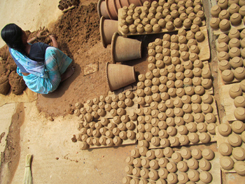

At another workshop I met two men who were working wheels, snipping cup after cup from large lumps of clay. None of this work is too fancy; function and practicality are key. But I did see some lovely long-necked jars, and the big storage vessels are awesome.
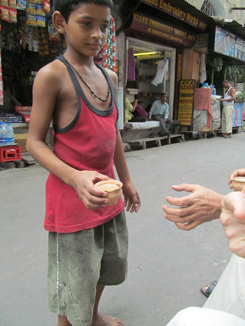
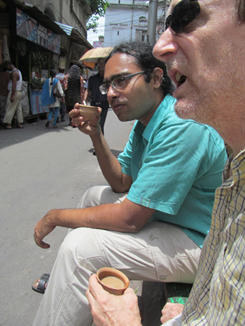
My lasting memory of clay in India will certainly be the tiny cups used to serve tea in places like Calcutta. Here, for a couple rupees, you get a mouthful of sweet, hot reinforcement, served in a terra cotta cup you then break on the ground and walk away from. Talk about bio-degradable and, unlike paper or plastic, with a minimum of processing!
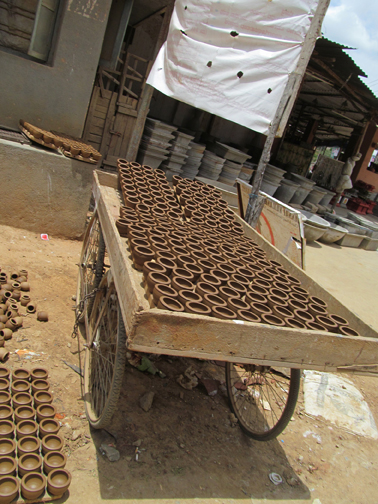
David Stairs is the founding editor of Design-Altruism-Project











Leave a Reply
You must be logged in to post a comment.